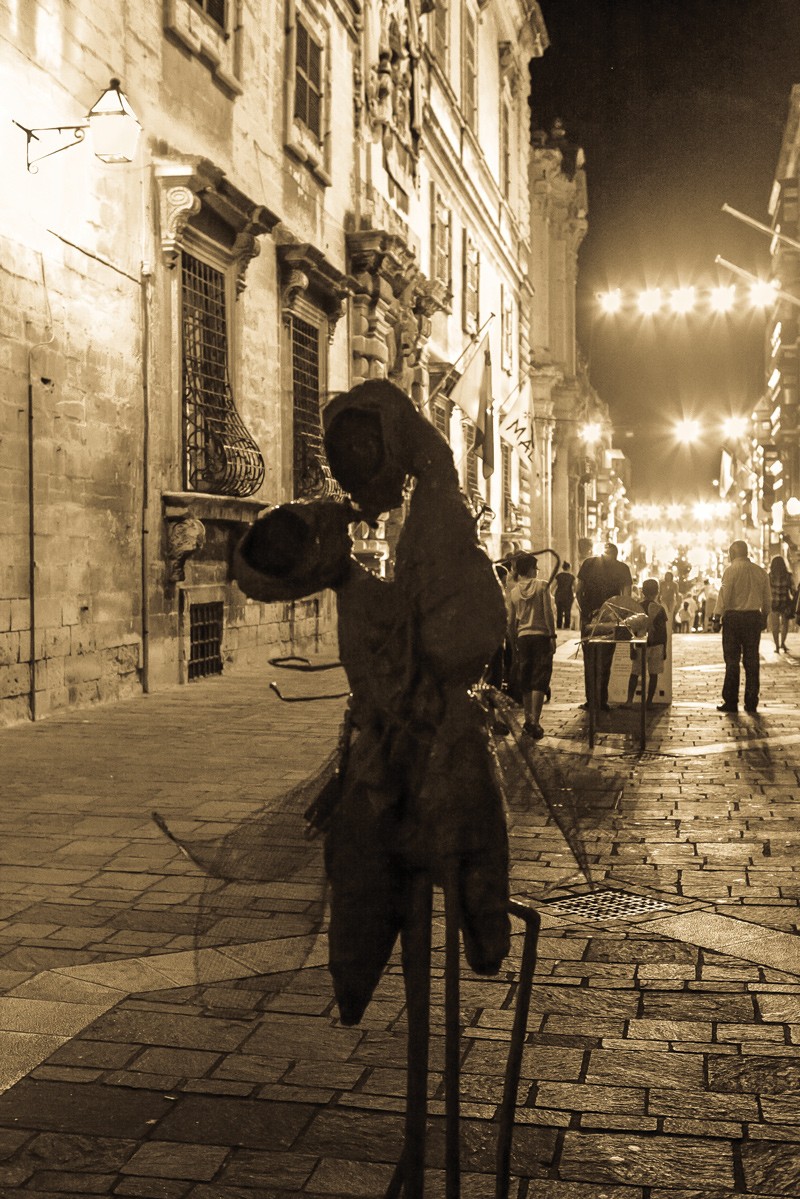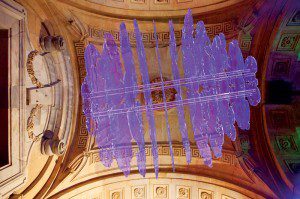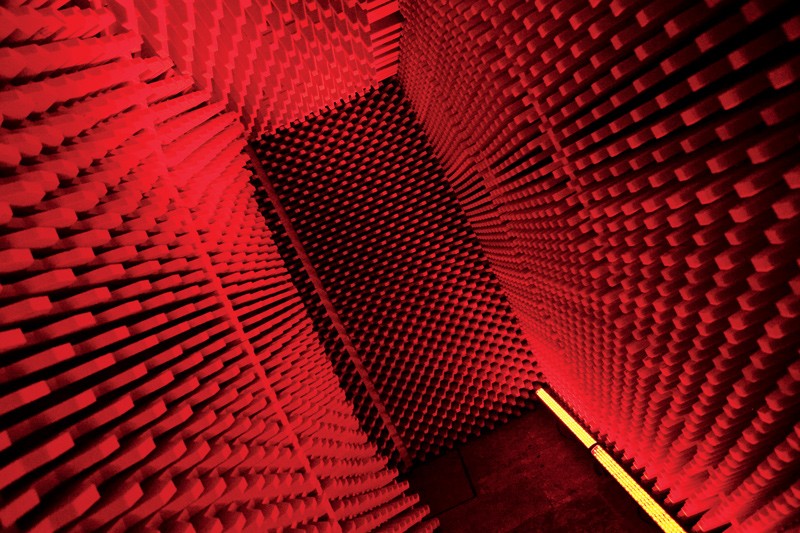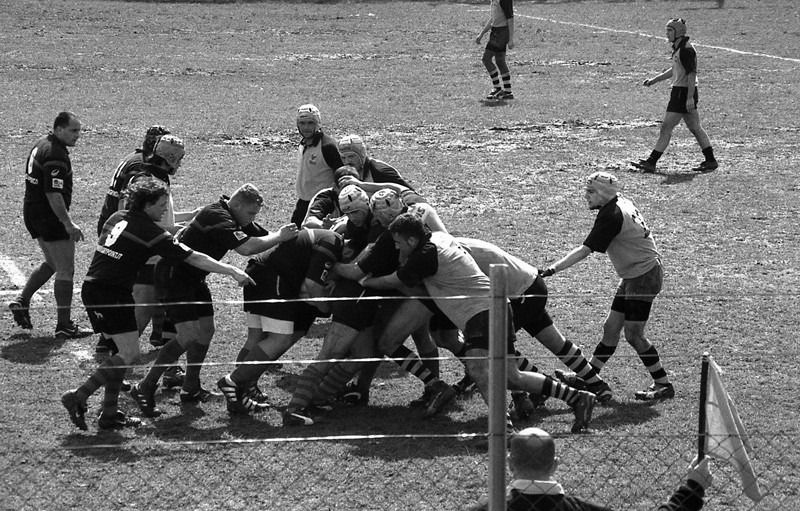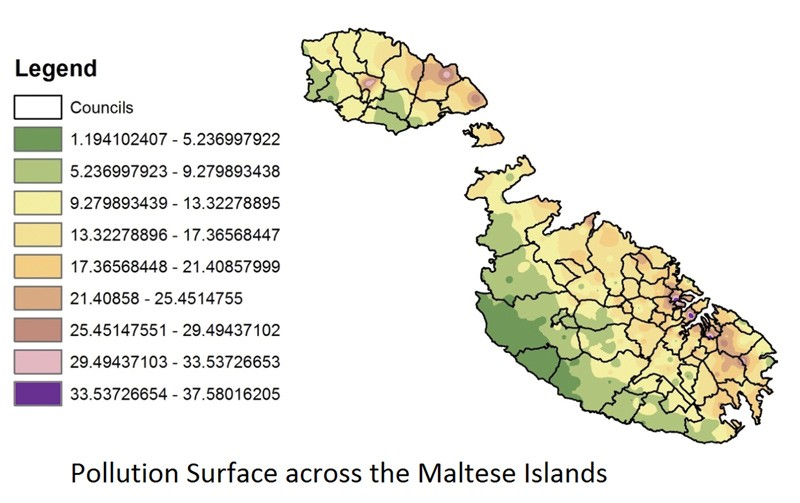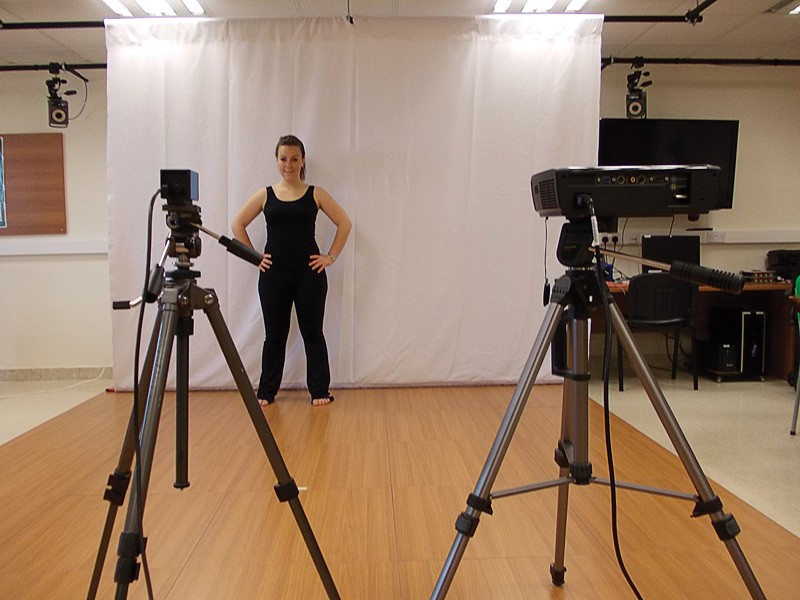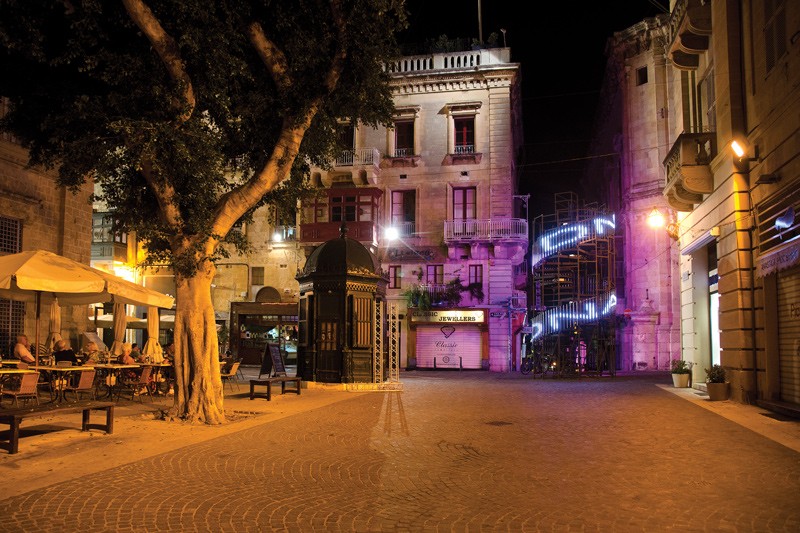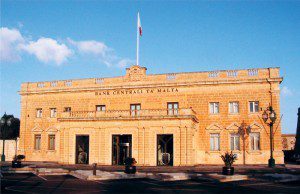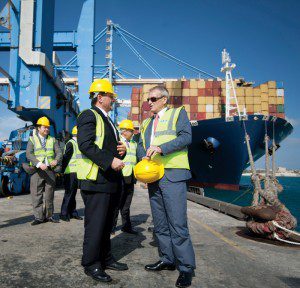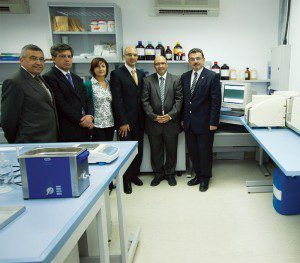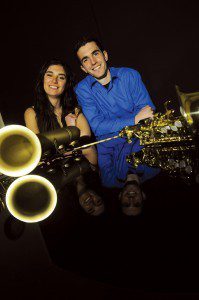Cortex
Raphael Vella
Scientists consulted: Dr Mario Valentino and his team
Location: In front of the National Library, Pjazza Reġina, Republic Street
Sponsor: Nexos Lighting Technology
Joyride
Emmanuel Bonnici
Scientists consulted: Roberta M. Rizzo
Location: St George’s Square
Sponsor: St James CavalierContinue reading
Silence in strait street
Chris Briffa Architects. Team: Chris Briffa, Justin Schembri, Joe Galea, Michael Quinton, Alex Spiteri Gingell, Andrew Doneo, Ryan Xuereb, Lily Agius, Maggy Mitter and Matthew Pandolfino Sponsor: Halmann Vella Ltd, Ecotechnique, Doneo and Nexos Lighting Technology
A sports addict confesses
Dr Shawn Agius shares his return to University to combine his interest in sports medicine and neurosurgery
Brain Awareness, Research and Facts
Prof. Giuseppe Di GiovanniContinue reading
Bad traffic, bad air
Air pollution is one of Malta’s greatest concerns. Transportation is the principal source with over 300,000 vehicles belching out smoke, which damages our environment and health. Emissions from vehicles need to be monitored and controlled, and the information used to improve the current system and ensure an acceptable air quality.
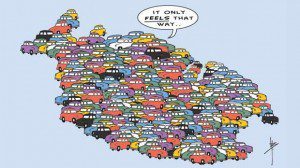
In Malta, air pollution levels are monitored by MEPA (Malta Environment and Planning Authority). MEPA has 131 diffusion tubes that take monthly measurements of air pollution levels. The pollution data set used ranges from 2004 to 2011. On the other hand, Transport Malta (TM) measures traffic flow along the main arterial roads. By using the pollution data set, Nicolette Formosa (supervised by Dr Kenneth Scerri) mapped the air pollution levels and major sources around Malta.
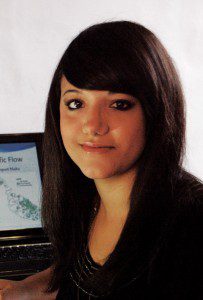
MEPA and TM take measurements at different locations. To overcome this problem, the pollution data set needed to be interpolated to extend over the whole of Malta. By interpolating the pollution measurements using mathematical models, traffic and pollution levels can be directly compared.
Malta was divided into four zones. The Grand Harbour area had the strongest link between traffic and pollution. The central area has a strong overlap but this decreased on Saturday and more so on Sunday. The north and south parts of Malta experienced lower levels over weekends. However, the northern area has a stronger link during weekdays. The areas of Floriana and St Julian’s had a remarkable link between pollution and traffic, lighting a red bulb marking priority areas for the authorities to tackle.Overall, Malta’s air pollution problems are interwoven with its traffic volume. This highlights a problem which needs both scientific and political measures to tackle. Formosa’s studies need to be taken a step further, “there needs to be a statistical means to interpret the data of air pollution measured against traffic flows in the same areas“ said Hon. George Pullicino, Minister for Resources and Rural Affairs. If implemented, the research could help lower health care costs in Malta while improving the quality of life.
This research was performed as part of a Bachelor of Electrical Engineering (Honours) at the Faculty of Engineering.
Theatre, Dance & Motion Tracking: Art?
The way a human tracks motion is both extraordinary and inconspicuous. In both theatre and dance, a lighting graphics engineer designs visuals and lighting to match a performer’s movement. Their motions might delight the audience but are very complex for computers to detect and interpret. Despite continuous breakthroughs, there are still many issues to overcome when tracking the human body across a stage.
Michaela Spiteri (supervised by Alexandra Bonnici) developed a system that allows dancers to control light effects through the dancer’s own movement. Mapping the movement of humans has several problems. Dancers tend to be highly flexible and perform very refined movements. The complex movements sometimes obscure certain body parts, which rapidly appear again, confusing the computer. 
The computer tracked motion through a number of steps. First, it created a mathematical model of the background image. This technique allows the background and dancer to be separated in live video, leaving the dancer’s silhouette.
Secondly, the dancer’s silhouette was then thinned to a skeleton in order to obtain five points: head, hands and feet. A Kalman filter was applied, allowing the computer to continue to track motion even if a point was hidden. The Kalman filter predicts location by assessing past information and predicting where it would be in the future.
The study could stimulate new ways for artists to express their concepts. Additionally, the computer algorithm used can be applied in augmented reality, medicine and surveillance.
This research was performed as part of a Bachelor of Engineering (Honours) at the Faculty of Engineering.
Science in the city 2012
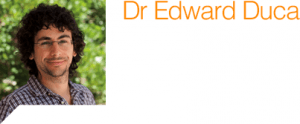 On the 28th September, Malta’s Science and Art festival launched to over 12,000 people, as part of the EU-wide celebration Researchers’ Night. Science carnival parades, busking, art installations, performances and more filled Malta’s capital with over 20 events — bleeding into the Notte Bianca festival. Science and art are usually seen as two separate cultures. Some humanities branches have directly rejected it, but other fields are embracing science. In Malta, top artists leafed through books, or had a chat with University of Malta scientists to find sources of inspiration (or criticism). Valletta became filled with giant fruit flies and DNA strands (Climbing your DNA). You could even have sat down, had a coffee, and pondered why there were acetate brain slices hanging in front of Malta’s National Library. The city could be viewed through a different lens for a few days.
On the 28th September, Malta’s Science and Art festival launched to over 12,000 people, as part of the EU-wide celebration Researchers’ Night. Science carnival parades, busking, art installations, performances and more filled Malta’s capital with over 20 events — bleeding into the Notte Bianca festival. Science and art are usually seen as two separate cultures. Some humanities branches have directly rejected it, but other fields are embracing science. In Malta, top artists leafed through books, or had a chat with University of Malta scientists to find sources of inspiration (or criticism). Valletta became filled with giant fruit flies and DNA strands (Climbing your DNA). You could even have sat down, had a coffee, and pondered why there were acetate brain slices hanging in front of Malta’s National Library. The city could be viewed through a different lens for a few days.
There are other ways science and art can interact. Science and technology can be used to explore art and analyse it. Van Gogh’s Sunflowers was recently examined by chemists, identifying why the pigment was becoming a mucky brown, shedding insight on how to reverse the degradation and bring back the artist’s true vision. Artists and scientists can come together to collaborate on new research. Recently in Ireland, a weaver visualised a large data set by making a huge tapestry. The scientist then analysed the giant carpet to interpret her data. Art can also be an excellent way to explore the ethical implications of science — its potential harm, benefit or relation to society.
Science in the City was simply a start that dipped its toe into this new pool. It saw researchers and students combine their efforts with artists and performers to bring together a range of events (read about Alexandra Fiott’s experience on pg. 23). Nine scientists appeared live on prime time TV to talk about their research with prominent entertainers Angie Laus and Pawlu Borg Bonaci. From within large crowds, science students performed science demonstrations, while MCST (Malta Council for Science and Technology) held a highly successful science fun fair for kids, with another kids activity at Auberge D’Italie by MARes (another EU funded project). Scientists met politicians at Science in the House organised by the Malta Chamber of Scientists. There were talks on the health benefits of local honey by Simone Cutajar (science graduate), mathematics and piano recitals by Tricia Dawn Williams, electronic and flute performances from Italy with compositions based on the Chaos Theory that explains hurricanes, and a bit more. The big night was followed up by talks and discussions. Ira Melkonyan spoke about the new field of BioArt while there was even a discussion on human cloning after the play A Number by Caryl Churchill. Over the next few pages, THINK has selected the major artworks created for Science in the City.
Words by Dr Edward Duca, full disclaimer: author is the project manager of Science in the City.
Part of Science in the City, Malta’s Science and Arts Festival
For more stories click here
Find out more:
– HOW?
– DESTROYING BOUNDARIES THROUGH SCIENCE IN THE CITY
Supporting the RIDT… BECAUSE RESEARCH MATTERS
When researchers are at work, they are taking steps that will eventually change our lives. Some steps are very small and will take years to complete, while others are faster and larger. Researchers are part of a global process that will provide solutions to a multitude of challenges. They can resolve our problems to provide energy, safeguard the environment, maintain food supplies, improve healthcare, and sustain efficient transportation. These solutions need innovation and the research that fuels it; this is the only way for societies to survive… let alone thrive! Our future needs hard work and new approaches, ‘doing what we’ve always done’ will not be enough.
The globe’s successful economies all invest huge amounts of money in research; much more than Malta, even if scaled to our economy. Locally, research is particularly relevant since we all know that Malta’s only real resource is the resilience, ingenuity, and diligence of its people.
THINK magazine helps pay tribute to the valuable work of researchers within the University of Malta. Over the centuries, the University has supplied Malta’s intellectual driving force. This institution has produced the graduates who have transformed a small barren archipelago into a civilised developed country within the European mainstream. Apart from a strong academic orientation, the University of Malta is an increasingly important centre for world-class research projects, across a wide range of disciplines. The University also collaborates with other major seats of learning, educational centres and institutes in a number of significant projects. This publication is committed to expose research and its social benefits.
| How can you help? |
|
If you share our objectives, please consider what you or your organisation can do to help us to achieve them.Has the University of Malta helped you arrive at where you are today? You can donate financially through the RIDT website. There you can choose whether your contribution goes to the current priorities of the RIDT, or to a faculty, institute, or centre of your choice.Why not consider leaving a contribution to the RIDT in your will? Talk to us for more details. Your gift, of whatever size, will play an important part in enabling the University of Malta to increase its research activities and to develop the necessary environment for excellence.
You can donate and get to know more about the RIDT by visiting www.ridt.org.mt |
For the University of Malta to fulfil its true ‘University of the Future’ role, a much greater emphasis on research and innovation is needed. This will serve as a catalyst for on-going development and progress. For this future to happen, society, and the individuals within it, will need to support the University of Malta’s thrust to prioritise research and innovation. Malta will then achieve a better, more sustainable, and ‘higher value added’ future.
The Research, Innovation and Development Trust (RIDT) has been set up with this specific goal: to engage with all sectors of society in a drive to support research activity. During the past year the RIDT has managed to secure an encouraging number of supporters who have made a donation towards its mission. Private companies, public institutions and individuals have come forward with their donations — large or small — because they believe that for a country to thrive and prosper it needs the backing of a strong University that maintains its role as a higher education institution and as a centre for research and innovation.
During 2012 the RIDT received an encouraging number of donations from individuals, companies and public institutions. The University recognises the generosity of donors and would like to publicly thank them. Together with these donors mentioned here, the RIDT received a number of donations from individuals and organisations that preferred to remain anonymous.
The Central Bank of Malta
The donation of the Central Bank of Malta will go towards the establishment of The Central Bank of Malta’s Chair in Economics at the University of Malta. The chair will be instituted within the University’s Faculty of Economics, Management and Accountancy. The agreement will run for five years, starting 1st October 2012.
Malta Freeport Terminals Ltd.
Malta Freeport Terminals Ltd will be supporting the Research, Innovation and Development Trust (RIDT) of the University of Malta, over a five year period starting 1st January 2013. The funds will be received through the University’s Research Trust, and will be administered by RIDT’s Board of Trustees.
Evolve Ltd.
Through the RIDT, Evolve Ltd, a subsidiary of Attard & Co that provides laboratory products and services, donated three instruments to the Chemistry Laboratory of the University of Malta. The instruments include a Gas Chromatograph, a Particle Sizer and a FTIR (Fourier Transform Infrared Spectrophotometer). The new equipment will enable the Department of Chemistry to increase its research activity while providing better facilities for post-graduate students.
Two university students, Christine Zerafa and Philip Attard, came up with a brilliant idea earlier this year. They put their musical talents to good use and managed to raise funds that were donated to the RIDT. Christine is finishing her Ph.D. in Chemistry and has recently obtained a Master’s degree in performance music, making her an accomplished concert pianist. Philip is doing a Bachelor’s degree in Music Studies and is fast becoming one of Malta’s leading saxophone players.

